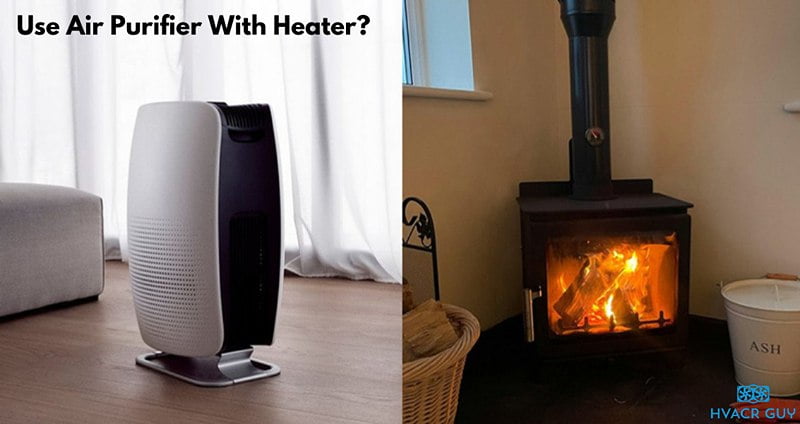Last Updated on February 7, 2024
Ever wondered if you could use your air purifier just as a fan? Well so did I. So I started researching if there is any way I could use airflow of an air purifier like a fan. I did get my answer but concluding it for others need a little more than a straight answer.
While an air purifier does have a fan, it will not give nearly enough airflow and circulation like a pedestal or a ceiling fan because its primary purpose is cleaning the air. You could however use air purifying fans that can purify as well as blow air at a high rate like a fan.
The ‘airflow’ is the keyword here. If you just need circulation of air in your room an air purifier will help to some extent. But if you need a good blow of air or a significant amount of airflow most air purifiers just won’t cut.
Therefore, it matters why you want to use your air purifier as a fan.
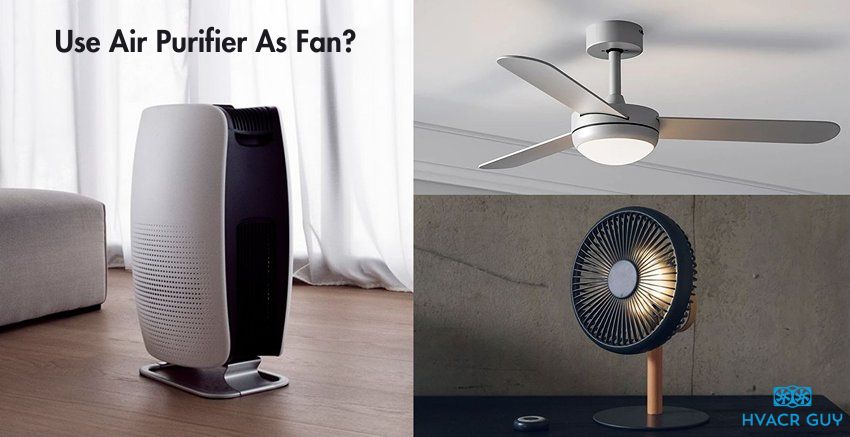
I have answered many questions in this article regarding this query, so you get the answer in totality. Some of those decisive questions include:
- Will an air purifier work as a fan if I just need circulation?
- Can I use an air purifier as a fan if I take out the filters?
- Do some air purifiers give airflow more than others?
- How much is the difference in airflow between fans and air purifiers?
- Are there any air purifiers that could be used as fans?
Air Purifier vs Fan: What is The Airflow Difference?
Low airflow is the primary reason why an air purifier cannot function just like a fan.
But which fan are we talking about? A ceiling fan, pedestal fan, desk fan, or an exhaust fan for that matter.
It matters because the air purifier itself is essentially a fan blowing through different filters including activated carbon filter, HEPA filter, pre-filter, etc.
Except that the fan inside an air purifier is small and only meant to circulate air at a steady rate to purify it by removing particles, pollen, pesticides, mildew, etc.
Here’s a comparison of the different types of fans that we use domestically and the amount of air they blow in cubic feet/minute:
| Type of Fan | Placement and Usage | Air Flow in CFM (Cubic Feet / Minute) |
| Ceiling Fan | Circulates air in larger rooms | 1,000 – 6,000 |
| Pedestal Fan | Adjustable height, effective cooling | 2,500 – 4,000 |
| Tower Fan | Space-saving, oscillating air movement | 1,000 – 4,000 |
| Window Fan | Fits in windows for air exchange | 1,000 – 2,500 |
| Desk Fan | Personal cooling on desks or tables | 500 – 2,000 |
| Attic Fan | Cooling and Ventilating Attic Spaces | 1000-5000 |
Now let’s look at how much air in CFM (Cubic Feet Per Minute) an air purifier can provide and compare that to the airflow of the fans we use in our homes.
CADR (Clean Air Delivery Rate) = Length x Width x Height x (Air Changes per Hour) / 60 min
Airflow Rate in CFM (Cubic Feet Per Minute) = CADR / Efficiency
CFM is the amount of air that an air purifier blows into the room in one minute.
CADR is the Clean Air Delivery Rate. It is the measure of the clean air that is delivered by your purifier in a duration of 1 minute.
Efficiency here means how much air is cleaned when it passes through the filters. This will vary based on the kind of particles like smoke, pollen, dust, etc.
ACH stands for Air Changes Per Hour. It indicates how many times the air in the room is replaced with fresh air in 1 hour.
Based on the formula above, if an air purifier has an ACH of 4, considering the common ceiling height in USA to be 9 ft, the air processed by your unit in 1 minute for different floor sizes will be the following:
| Floor Area Coverage of Air Purifier | CADR in Cubic Feet / Minute |
| 150 sq ft | 90 |
| 200 sq ft | 120 |
| 300 sq ft | 180 |
| 400 sq ft | 240 |
| 600 sq ft | 360 |
| 800 sq ft | 480 |
| 1000 sq ft | 600 |
Note: In reality, the actual airflow would be a little more than CADR.
Because CADR is the measure of clean air given by your air purifier, it doesn’t include the little amount of air that passes through but remains unfiltered.
Airflow Differences: Small vs. Large Air Purifiers vs. Fans
From the table above, we can see that an air purifier for an average room in United States i.e. 150 Sq ft will provide a clean airflow of about 90 CFM.
Even if the actual airflow from an air purifier is double the CADR (which is almost never the case), it doesn’t even come close to the airflow of a desk fan that ranges from 500-2000 CFM.
But what if you have a relatively large-sized air purifier? Where does that stand?
An air purifier designed for a 2-bedroom apartment in US i.e. about 800 sq ft delivers clean air at a rate of 480 CFM.
Comparing that, from the tables above, clearly even a larger size air purifier will fail to give as much airflow as a medium-sized desk fan, let alone a larger fan, like a ceiling, pedestal, or tower fan.
The reason for this low airflow is simple…
An air purifier needs to slowly and consistently circulate air through your living area to make it clean.
It is not designed to make your living space cooler by blowing air like fans and removing heat by convection and evaporation.
Will Air Purifier Work Like a Fan If You Take Out Filters?
Air purifiers have many kinds of filters in them. Some air purifiers don’t even have filters in the conventional sense like UV air purifiers and ionizers.
Here’s a little visual appearance and a short description of the common filters used in air purifiers:
| Pre-filters | 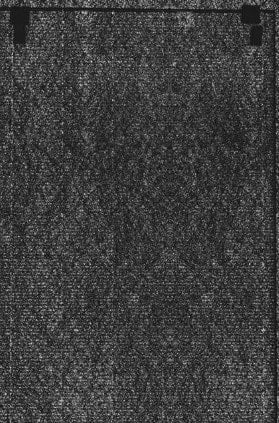 | Capture large particles like hair, dust, and lint to protect more fine-tuned filters. |
| Activated Carbon Filters | 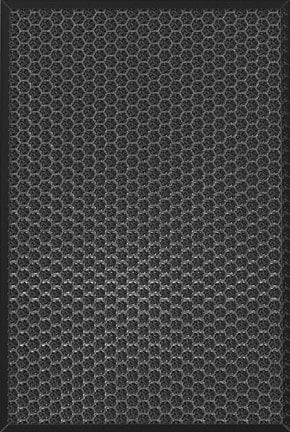 | Remove odors, gases, and volatile organic compounds (VOCs). Do so by adsorbing them onto the carbon surface. |
| HEPA (High-Efficiency Particulate Air) Filters | 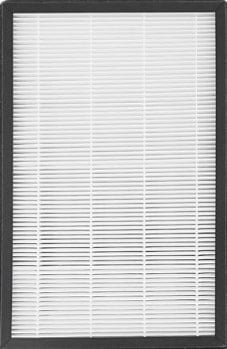 | Captures supersmall particles, including dust, pollen, mold spores, etc. Traps particles as small as 0.3 microns. |
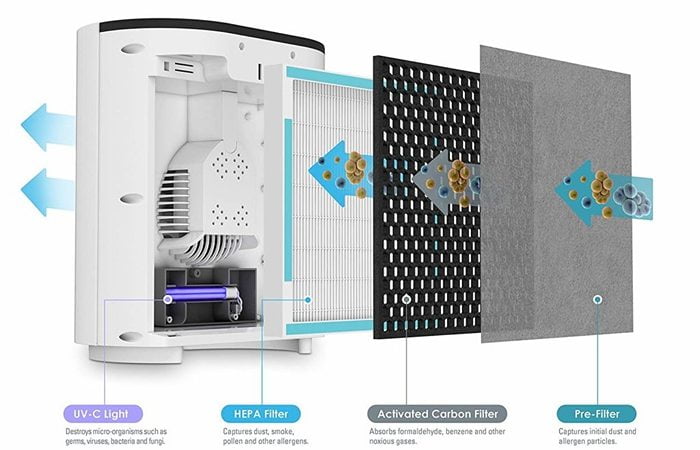
Use an air purifier without a filter; Another idea one may think for boosting its airflow.
I thought so too.
Removing filters from the unit like pre-filters, carbon filters, HEPA filters, etc. will allow unrestricted flow of air through the air purifier.
This will allow a higher quantity of air per unit time and at a faster speed.
But you still won’t get an airflow even close to a medium-sized pedestal or a ceiling fan with most residential air purifiers.
Why?
Because even though you improved airflow by removing filters, the centrifugal fan inside your air purifier is designed to pull only small quantities of air.
This means that even by removing filters you can expect better airflow and circulation, but for most residential air purifiers, it would be far less than domestic fans.
Remember: Don’t Remove Some Filters While Keeping Others…
It is a bad idea to remove some filters, especially prefilters, from an air purifier while keeping the others.
Firstly. If you remove pre-filters from an air purifier while keeping the HEPA filters in, they will quickly become clogged.
This will cause the airflow to reduce eventually, as the dense mesh of fibers in HEPA filters is designed to catch particles as small as 0.3 microns. Not to talk about the reduced life.
Removing pre-filters will also reduce the effectiveness of activated carbon filters to adsorb odors, gases, and volatile organic compounds (VOCs).
When Can You Use Your Air Purifier as a Fan?
For relatively small rooms, if you’d like moderately low circulations of about 100-500 CFM, you could use air purifiers for that purpose.
In fact, I recommend doing so. An air purifier will keep the air moving at a steady rate as well as purify it to clean your environment from dust, allergens, and pollutants.
Most residential air purifiers push air around the rate of 150 – 250 CFM.
You could check that in the specifications. And remember, as I said earlier, there is a difference in CADR and airflow.
If the CADR is 300 CFM. You can expect the actual airflow to be around 400 CFM.
That is why I was generous with CADR ratings of air purifiers in my calculation, to take into account that fraction of air that passes through filters but never gets cleaned.
Are There Some Air Purifiers That Also Work as Fans?
There are some air purifying fans available in the market that serve a dual purpose: air circulation and air purification. And they can do so by blowing air at a speed equivalent to fans.
Many people observed a cleaner environment and significantly less dust on floors using them.
There are several options available but if you plan on having one give a look to my recommendation: Dyson Pure Cool™ TP01 Air Purifier and Fan.
I selected it based on its high airflow and a good air filtration and purification system. And yes, it does have a HEPA filter in it.
Wrapping Up
Air purifiers do allow air movement and circulation in your living area but for most residential units, it would be much lower than fans. So your air purifier will most likely not be able to replace the fan.
However, you could use air purifiers for smaller rooms for circulation at the rate of 100 – 400 CFM, as well as enhance the quality of its environment.


